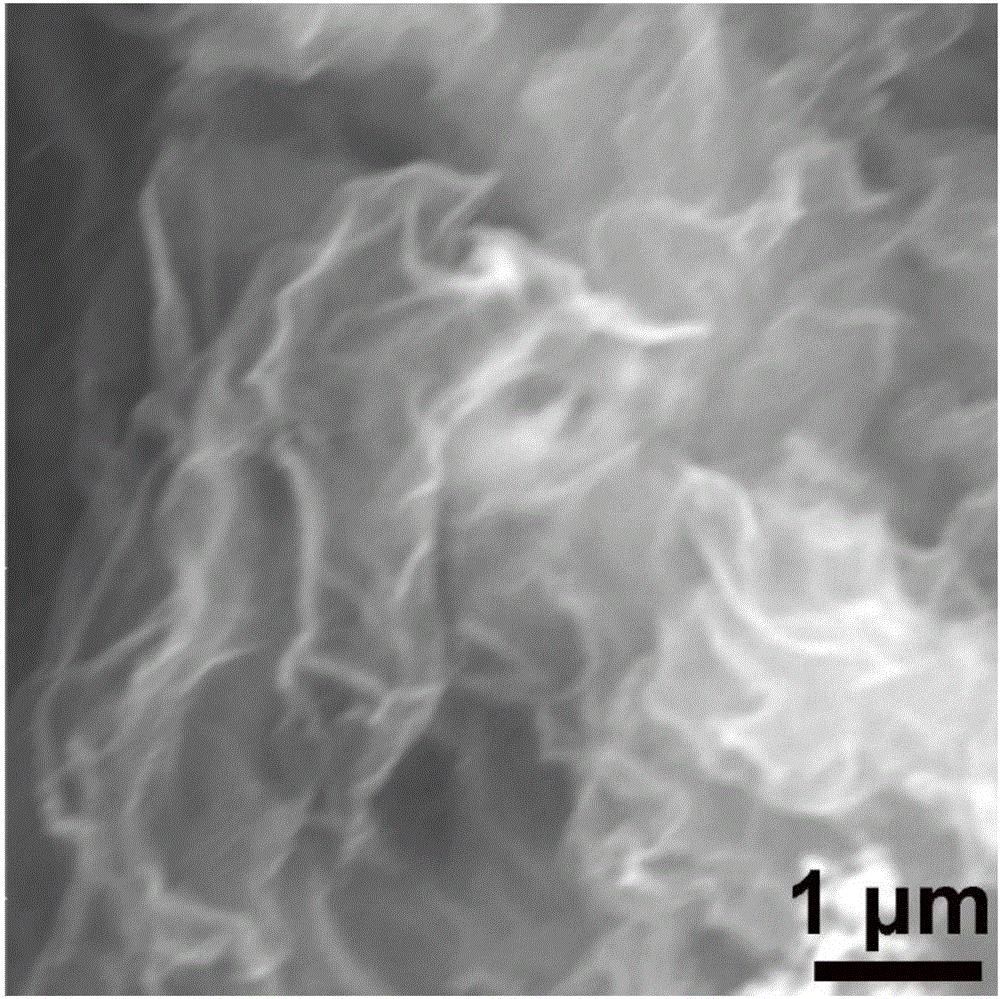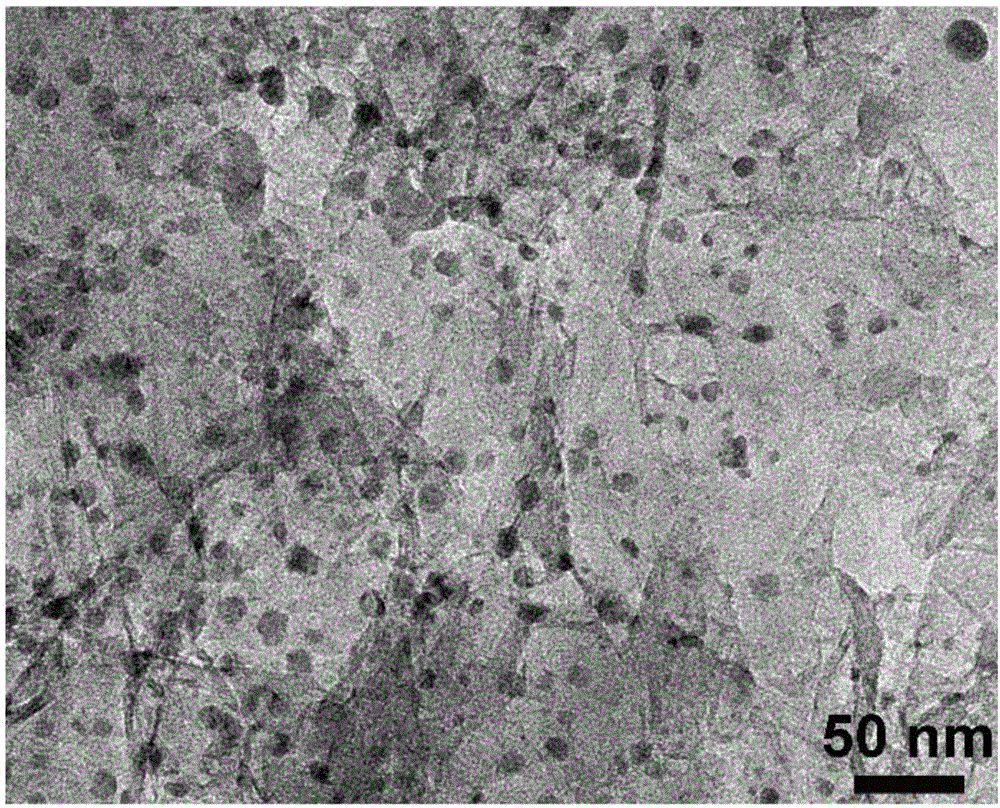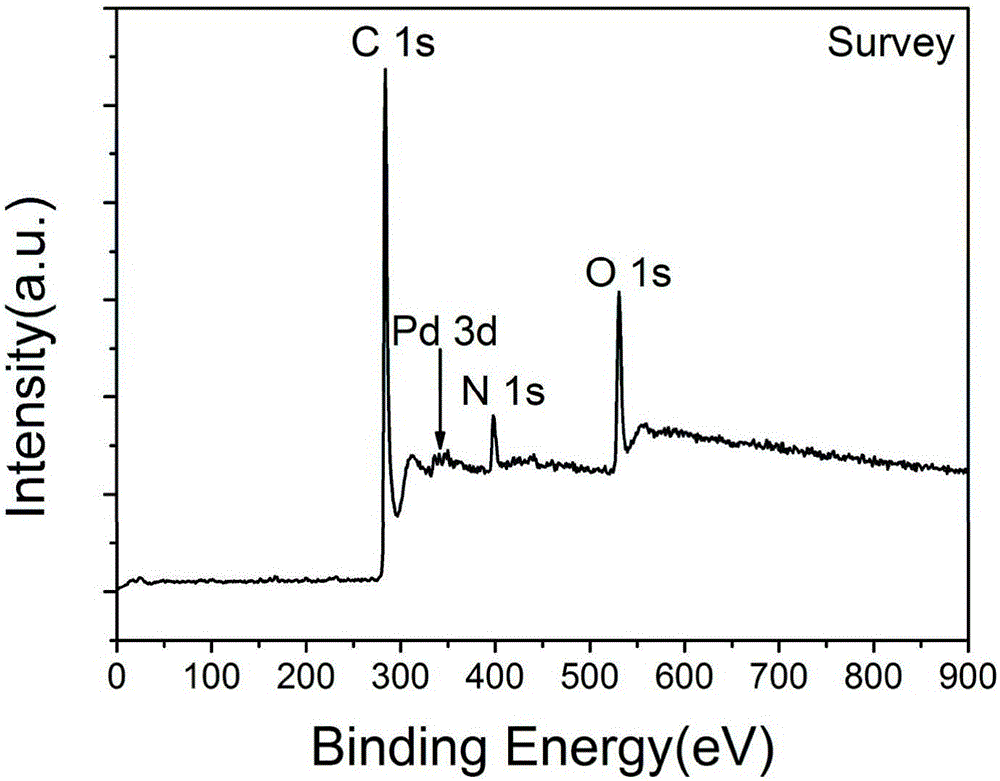Preparation method for metal nanoparticle-loaded nitrogen-doped porous graphene
A technology of porous graphene and nanoparticles, applied in chemical instruments and methods, catalyst activation/preparation, physical/chemical process catalysts, etc., can solve the problems of unreported preparation methods, and achieve low cost, mild reaction conditions, and process simple effect
- Summary
- Abstract
- Description
- Claims
- Application Information
AI Technical Summary
Problems solved by technology
Method used
Image
Examples
Embodiment 1
[0021] Feed according to the mass ratio of graphene oxide, metal precursor, hydrogen peroxide, and ammonia 1:0.033:0.05:30. Take 50mL of graphene oxide aqueous solution with a concentration of 6mg / mL, put it into a 100mL polytetrafluoroethylene reactor liner, add 5mL of hydrogen peroxide solution with a mass fraction of 0.3% and 30mL with a mass fraction of 28 - 30% aqueous ammonia solution and 10 mg potassium chloropalladate. The uniformly mixed reactants were put into a hydrothermal reaction kettle, and subjected to a hydrothermal reaction in an oven at 180° C. for 6 hours to obtain nitrogen-doped porous graphene loaded with palladium nanoparticles.
[0022] In order to better understand the structural characteristics and properties of the nitrogen-doped porous graphene loaded with palladium nanoparticles prepared in this example, SEM, TEM, XPS, adsorption-desorption and pore size distribution tests were carried out respectively.
[0023] like figure 1 Shown, the nitrogen-...
Embodiment 2
[0025] Feed according to the mass ratio of graphene oxide to metal precursor, hydrogen peroxide, and ammonia 1:0.001:0.05:0.05. Take 75 mL of graphene oxide aqueous solution with a concentration of 4 mg / mL, put it into a 100 mL polytetrafluoroethylene reactor liner, add 5 mL of hydrogen peroxide solution with a mass fraction of 0.3% and 0.05 mL of a hydrogen peroxide solution with a mass fraction of 28-30% under stirring conditions. % ammonia solution and 0.3mg potassium chloroplatinite. The uniformly mixed reactants were put into a hydrothermal reaction kettle, and hydrothermally reacted in an oven at 120° C. for 24 hours to obtain nitrogen-doped porous graphene loaded with platinum nanoparticles.
Embodiment 3
[0027] Feed according to the mass ratio of graphene oxide to metal precursor, hydrogen peroxide, and ammonia 1:0.008:0.05:24. Take 50mL graphene oxide aqueous solution with a concentration of 5mg / mL, put it into a 100mL polytetrafluoroethylene reactor liner, add 5mL hydrogen peroxide solution with a mass fraction of 0.3% and 20mL with a mass fraction of 28-30% Ammonia solution and 2mg potassium chloroaurate. The uniformly mixed reactants were put into a hydrothermal reaction kettle, and hydrothermally reacted in an oven at 180° C. for 10 hours to obtain nitrogen-doped porous graphene loaded with gold nanoparticles.
PUM
| Property | Measurement | Unit |
|---|---|---|
| Specific surface area | aaaaa | aaaaa |
Abstract
Description
Claims
Application Information
 Login to View More
Login to View More - R&D
- Intellectual Property
- Life Sciences
- Materials
- Tech Scout
- Unparalleled Data Quality
- Higher Quality Content
- 60% Fewer Hallucinations
Browse by: Latest US Patents, China's latest patents, Technical Efficacy Thesaurus, Application Domain, Technology Topic, Popular Technical Reports.
© 2025 PatSnap. All rights reserved.Legal|Privacy policy|Modern Slavery Act Transparency Statement|Sitemap|About US| Contact US: help@patsnap.com



